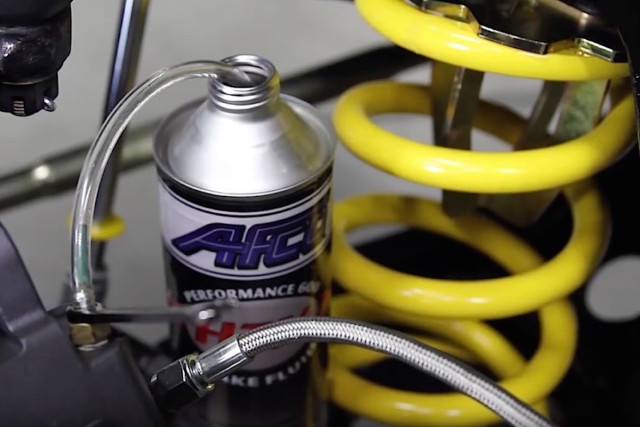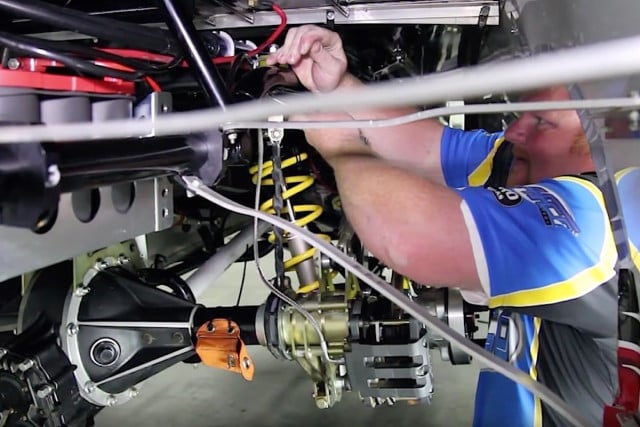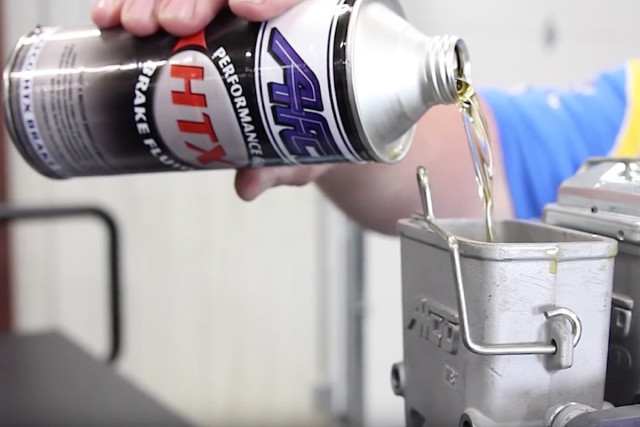Whether you car is a daily driver or a fully-prepped drag racer, preventative maintenance is key to a long-lasting car. Over time, fluids begin to heat up and break down, losing their properties which once made them function correctly.
AFCO Racing explains why it’s important to bleed your brake system regularly, and even shows us some tips and tricks to make the job easier along the way.
 As Ben Baker from AFCO explains, properly bleeding the master cylinder is the first step to ensuring your brakes will perform optimally. Bleeding the master cylinder first will ensure the brake system has the correct amount of pressure during the bleeding process, and will remove any air trapped inside the master cylinder itself. The next step is to begin bleeding each brake caliper individually.
As Ben Baker from AFCO explains, properly bleeding the master cylinder is the first step to ensuring your brakes will perform optimally. Bleeding the master cylinder first will ensure the brake system has the correct amount of pressure during the bleeding process, and will remove any air trapped inside the master cylinder itself. The next step is to begin bleeding each brake caliper individually.
Baker recommends beginning with the farthest caliper from the master cylinder location, which is the rear right caliper. From there, continue the pattern to the rear left caliper, then the front right, ending with the front left. He explains the reasoning behind this is to provide enough fluid to reach each caliper separately while reducing the intake of any unwanted air in the system.
 Have a friend help by providing pressure to the brake pedal each time the bleeder valve is opened on the caliper, then letting off the pedal once valve is closed. This process not only sends fresh brake fluid to the caliper, but also removes any air trapped in the brake system which can cause the brake pedal to feel soft or spongy. If the brake pedal still doesn’t feel firm after bleeding the brake system, Baker says that there could be a few reasons for that. A crimped or loose brake line can affect pedal pressure, as well as a master cylinder which is placed lower in the vehicle than the brake lines themselves. Any of those issues can cause air to be introduced into the system during the bleeding process.
Have a friend help by providing pressure to the brake pedal each time the bleeder valve is opened on the caliper, then letting off the pedal once valve is closed. This process not only sends fresh brake fluid to the caliper, but also removes any air trapped in the brake system which can cause the brake pedal to feel soft or spongy. If the brake pedal still doesn’t feel firm after bleeding the brake system, Baker says that there could be a few reasons for that. A crimped or loose brake line can affect pedal pressure, as well as a master cylinder which is placed lower in the vehicle than the brake lines themselves. Any of those issues can cause air to be introduced into the system during the bleeding process.
You can find more preventative maintenance information on AFCO Racing’s website.


















